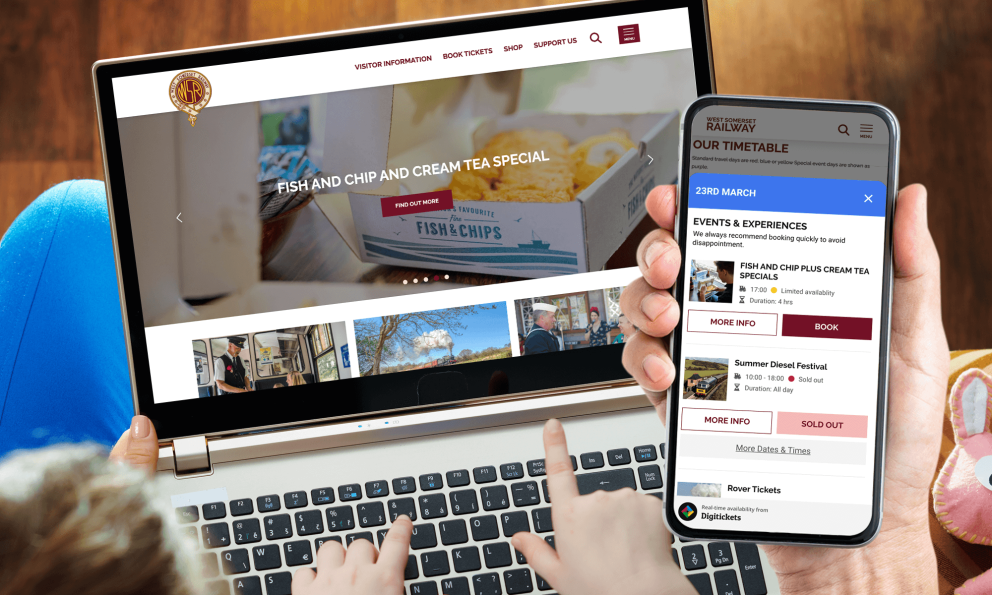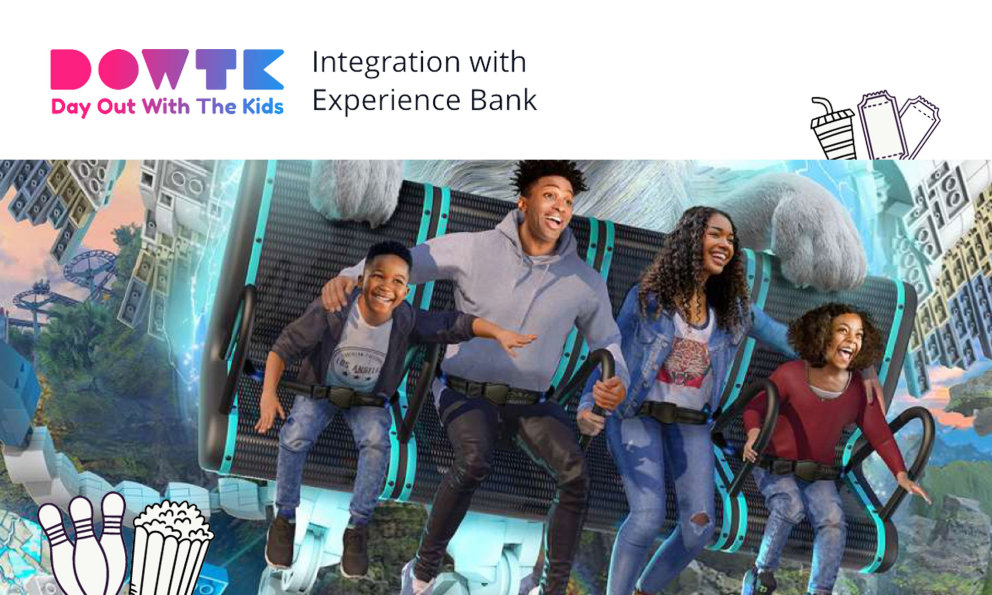What metrics should you be measuring?
To determine whether your website journey is on track and pinpoint specific areas to focus your improvement efforts, there are several key metrics that you should be measuring:
Engagement rates:
A relatively new Google metric since the advent of GA4 to replace Universal Analytics, Engagement Rate looks at the percentage of engaged sessions on your website. It is measured as a session that lasts longer than 10 seconds, has a conversion event, or at least 2 page/screen views.
Engagement rate is designed to eventually supersede the bounce rate metric, which no longer aligns with how people browse and buy today. However, despite its benefits, not everyone is measuring it yet, with Rubber Cheese reporting only 5% of respondents in their 2023 Visitor Attraction Website Report able to report on their engagement rates last year. Agility Marketing recently revealed the average website engagement rate from their analysis from the past 8 months as 65%, giving other visitor attractions a helpful benchmark to compare their performance against.
By measuring your engagement rate, you’ll be able to better determine where website visitors are most engaged throughout the entire conversion journey, and identify points in the journey where their attention drops off to test and optimise. This is particularly important during the research phase of the buyer journey before users progress to the checkout stage.
Cart abandonment:
UX research institute, Baymard has been measuring the global average cart abandonment rate for the past 12 years and reports that it currently sits at 69.8%. According to Rubber Cheese’s 2023 report, we see this rise to 75% for visitor attractions, representing a 5% increase from 2022.
According to Baymard, the best way to mitigate cart abandonment rates is through the design and flow of the checkout process, having frequently found the sole causes for cart abandonment are either due to frustration or not knowing how to complete a field, therefore being forced to abandon the checkout process.
By measuring your cart abandon rates at each stage of the booking process, you’ll be able to pinpoint points of friction and frustration to improve. Better still, through user testing and heat-mapping, you can learn from actual user behaviour - what may seem obvious and easy to you just might not be for your users!
Conversions:
Of course, reduced cart abandonment rates directly correlate with an increase in conversions. Conversion rate can be measured by calculating the number of orders divided by the number of visitors to your website.
According to Shopify, for eCommerce websites, a good conversion rate benchmark to aim for is 2.5%. Looking at visitor attractions specifically, Rubber Cheese’s annual survey of 188 attraction sites found the industry average conversion rate to be 5%.
Every attraction and audience is different, so while benchmarks are useful, use conversion rate metrics to work out what good looks like for you, and benchmark your improvements against your own previous performance too - it can be really motivating to see how much of an impact even small improvements can have on your bottom line.
As with all of these metrics, the best strategy is to rigorously and consistently test, learn and optimise. You can learn so much more from your users and their onsite behaviour than you can from a set of benchmark metrics.
Our approach:
At DigiTickets and Website Vision, we believe that achieving an integrated approach across your website user journey shouldn’t feel like an impossible technical challenge.
Through Website Vision, we have over 20 years of experience building conversion-optimised websites specifically for the visitor attraction sector. Our team are experts at crafting sites that give customers the best possible online experience, answering their questions, showing them what to expect when they visit, and making it easy to book tickets.
With over 300 happy customers and counting, we bring this best practice knowledge to you, and far from creating a one-size-fits-all template for everyone, we tailor our approach to each use case and audience, ensuring that your customers get the best possible introduction to your attraction, AND the optimal user journey to arrange their visit.
…That’s where DigiTickets comes in; already trusted by over 1000 venues to sell millions of tickets every year, our flexible and comprehensive ticketing solutions are built to integrate seamlessly into the website experience. Serving up real-time availability and pricing across all available ticket types, then guiding your visitors through a conversion-optimised booking flow to purchase, our booking process is tried, tested and continually optimised, yet easily customised to your attraction’s and visitor’s unique needs.
What about payments?
Thanks to seamless integration with leading payment gateways and our specialist solution, Payyo, DigiTickets also makes the payment process quick and easy, on desktop and mobile. With 86% of our customers’ sales now coming from mobile, we support Google & Apple Pay payments via Payyo, or via your own payment gateway if this functionality is included.
Do I have to use Website Vision and DigiTickets together?
Developed and optimised in parallel, there are numerous advantages to combining the DigiTickets booking system with a Website Vision website, including benefitting from over 30 years of combined best practice, native integration capabilities, superior service and unbeaten reliability.
(Did you know, as part of our broader suite of solutions, you can also integrate payment services, channel management for OTAs, intelligent staff scheduling and a range of POS and self-serve kiosk options too?!)
However, we also believe that flexibility is vital, which is why we’ve built all our solutions to play nice with others - facilitating easy and comprehensive integration with the systems you use already. This works both ways, whether you’re integrating booking functionality via another ticketing provider with your Website Vision website, or connecting your DigiTickets solution to another CMS provider to facilitate that all-important online booking journey.
Where can I start?
If you’re already a DigiTickets or Website Vision customer and would like to explore the benefits of an integrated solution further, please get in touch with your Customer Relationship Manager here.
If you’re new here - welcome! We’d love to chat about how we can help you create a seamless website experience, increase conversions and delight your customers. Please arrange a callback and our friendly team will get straight back to you.





